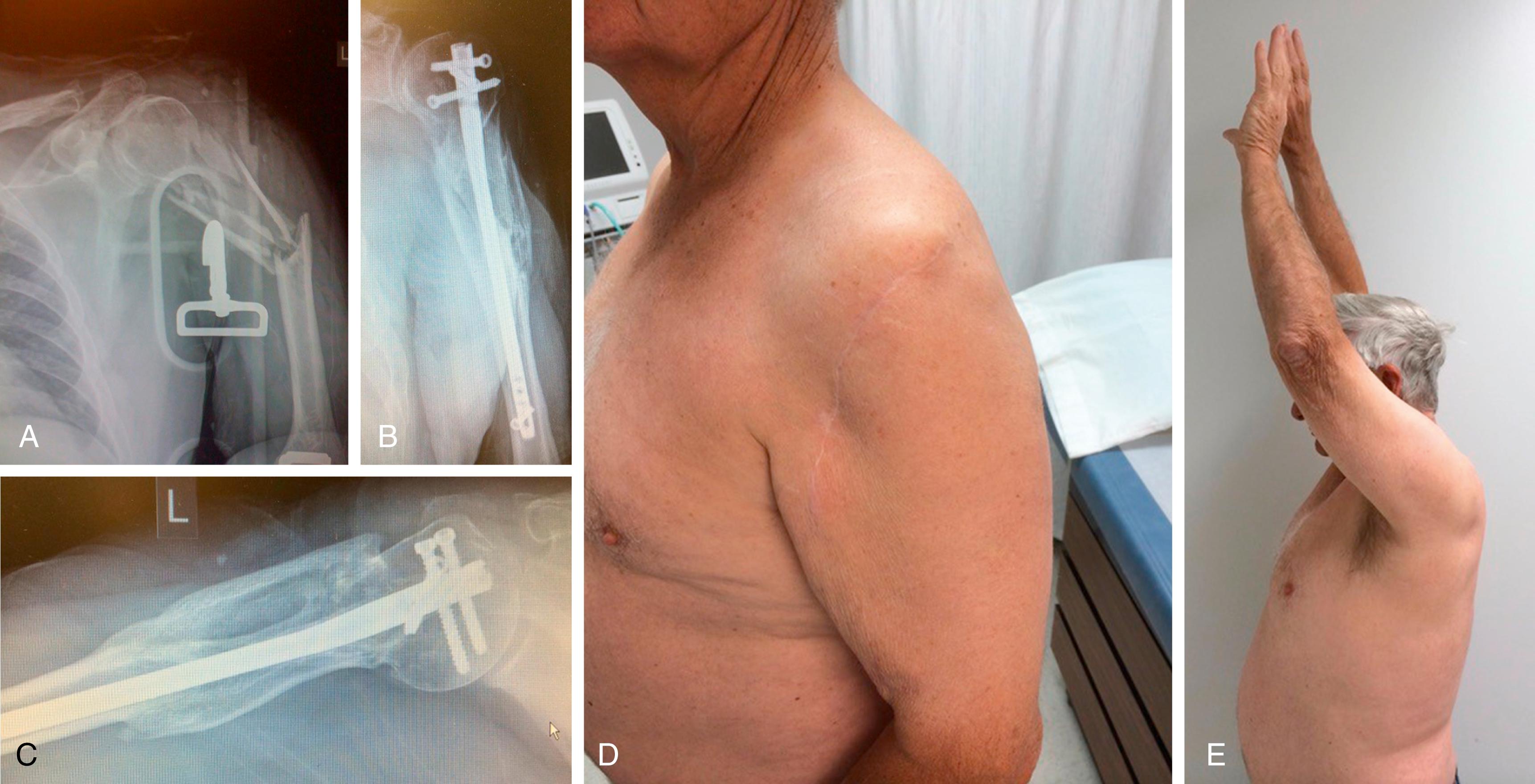Physical Address
304 North Cardinal St.
Dorchester Center, MA 02124
Most humeral shaft fractures can be effectively managed without surgery utilizing functional bracing. However, displaced or comminuted humeral shaft fractures, fractures with extension into the proximal humerus, and patients following polytrauma with multiple extremity fractures may benefit from surgical fixation. Intramedullary fixation for midshaft humerus fractures can be a valuable option for the management of complex, comminuted, and segmental fractures. This method of fixation should also be considered in a compromised soft tissue envelope where large surgical exposure should be avoided ( Fig. 35.1 ). These implants are typically placed antegrade by insertion through a small hole in the humeral head articular cartilage into the intramedullary canal and thereby can provide stabilization to most of the humeral shaft. Fractures that extend into the distal humeral metaphysis or articular surface are typically not amenable to intramedullary fixation as the intramedullary canal terminates 2–3 cm proximal to the olecranon fossa. Retrograde nailing can also be utilized to avoid iatrogenic injury to the humeral head articular surface but is typically limited to middle-third diaphyseal fractures and is relatively contraindicated in patients with small intramedullary canals or who are younger in age. Additionally, primary fixation with plating remains the recommended treatment choice for simple transverse or short oblique humeral shaft fractures as the nonunion rate has been shown to be significantly higher in these fracture types treated with antegrade nailing compared with plate osteosynthesis.

Become a Clinical Tree membership for Full access and enjoy Unlimited articles
If you are a member. Log in here